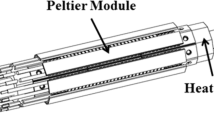Abstract
To determine the processability of plastics for injection molding, an apparatus was established based on the capillary rheometer in this work. It consists of a modified rheometer, a simplified mold unit, and a data acquisition system. The mold unit includes the mold rack, sprue bush, smooth board, and cavity board. Both boards have the inclined planes. They are coupled together to form the combined wedge. The mold clamping is simply achieved through inserting the combined wedge into the wedge trough of the mold rack. With the data acquisition system the real-time measurement is performed during the injection-molding test. With this novel apparatus the processability of plastics for injection molding can be directly characterized on the rheometer instead of the injection-molding machine, and the amount of the samples for experiments on the apparatus would be fewer than that on the injection molding machine. Moreover, the apparatus can thoroughly monitor the injection flow for subsequent investigations. Additionally, the products of the experiments provide the standard strips required for the mechanical properties tests of most experimental materials. By means of this apparatus, a conventional capillary rheometer can be modified as a convenient tool for the development of new materials.
Similar content being viewed by others
References
Wang, J.C., Li, A.T., Tsai, Y.P., and Hsu, R.Q., Analysis for Diving Regulator Applying Local Heating Mechanism of Vapor Chamber in Insert Molding Process, International Communications in Heat and Mass Transfer 38(2): 179–183 (2011).
Tsai, Y.P., Wang, J.C., and Hsu, R.Q., The Effect of Vapor Chamber in an Injection Molding Process on Part Tensile Strength, Experimental Techniques 35(1): 60–64 (2011).
Mulyana, R., Cabrera, E., Castro, J.M., Lee, L.J., and Min, Y., Injection Molding of Water Containing Thermoplastic Polyolefin, International Polymer Processing 27(1): 9–17 (2012).
Peng, J., Turng, L.S., and Osswald, T.A., A New Microcellular Injection Molding Process for Polycarbonate Using Water as the Physical Blowing Agent, Polymer Engineering and Science 52(7): 1464–1473 (2012).
Hertel, D.L., and Oliver, C.K., Practical Approach to Injection Molding Using an Instron Capillary Rheometer, Journal of Elastomers and Plastics 7: 414–426 (1975).
Goettfer, A., Capillary Rheometry: An Effective Process-Control Tool, Modern Plastics 63: 82–83 (1986).
Hanemann, T., Honnef, K., Muller, T., and Weber, O., New Methacrylate-Based Feedstock Systems for Micro Powder Injection Moulding, Microsystem Technologies 17: 451–457 (2011).
Jiang, K., Yu, F.L., Su, R., et al., High Speed Injection Molding of High Density Polyethylene—Effects of Injection Speed on Structure and Properties, Chinese Journal of Polymer Science 29: 456–464 (2011).
Claveria, I., Javierre, C., and Ponz, L., Method for Generation of Rheological Model to Characterize Non-Conventional Injection Molding by Means of Spiral Mold, Journal of Materials Processing Technology 162: 477–483 (2005).
Huang, H.X., and Wang, J.K., Equipment Development and Experimental Investigation on the Cellular Structure of Microcellular Injection Molded Parts, Polymer Testing 27: 513–519 (2008).
Kurt, M., Kamber, O.S., Kaynak, Y., Atakok, G., and Girit, O., Experimental Investigation of Plastic Injection Molding: Assessment of the Effects of Cavity Pressure and Mold Temperature on the Quality of the Final Products, Materials and Design 30: 3217–3224 (2009).
Kelly, A.L., Gough, T., Whiteside, B.R., and Coates, P.D., High Shear Strain Rate Rheometry of Polymer Melts, Journal of Applied Polymer Science 114: 864–873 (2009).
Zhang, N., and Gilchrist, M.D., Characterization of Thermo-Rheological Behavior of Polymer Melts during the Micro Injection Molding Process, Polymer Testing 31: 748–758 (2012).
Rides, M., Kelly, A.L., and Allen, C.R.G., An Investigation of High Rate Capillary Extrusion Rheometry of Thermoplastics, Polymer Testing 30: 916–924 (2011).
Liu, Y.J., Huang, Y.G., Zeng, G.S., Song J., and Li X.G., “A Rheological Test Method and Apparatus for Polymer Composites.” China Patent No. 200810143934.5 (2010).
Huang, Y.G., Liu, Y.J., and Zhao, S.H., “Mold with Slopes for Clamping.” China Patent No. 201220245754.X (2012).
Author information
Authors and Affiliations
Corresponding author
Rights and permissions
About this article
Cite this article
Huang, YG., Li, DX. & Liu, YJ. An Apparatus for Injection-Molding Tests Based on the Capillary Rheometer with Wedge Mold Boards. Exp Tech 40, 137–148 (2016). https://doi.org/10.1007/s40799-016-0016-x
Published:
Issue Date:
DOI: https://doi.org/10.1007/s40799-016-0016-x



